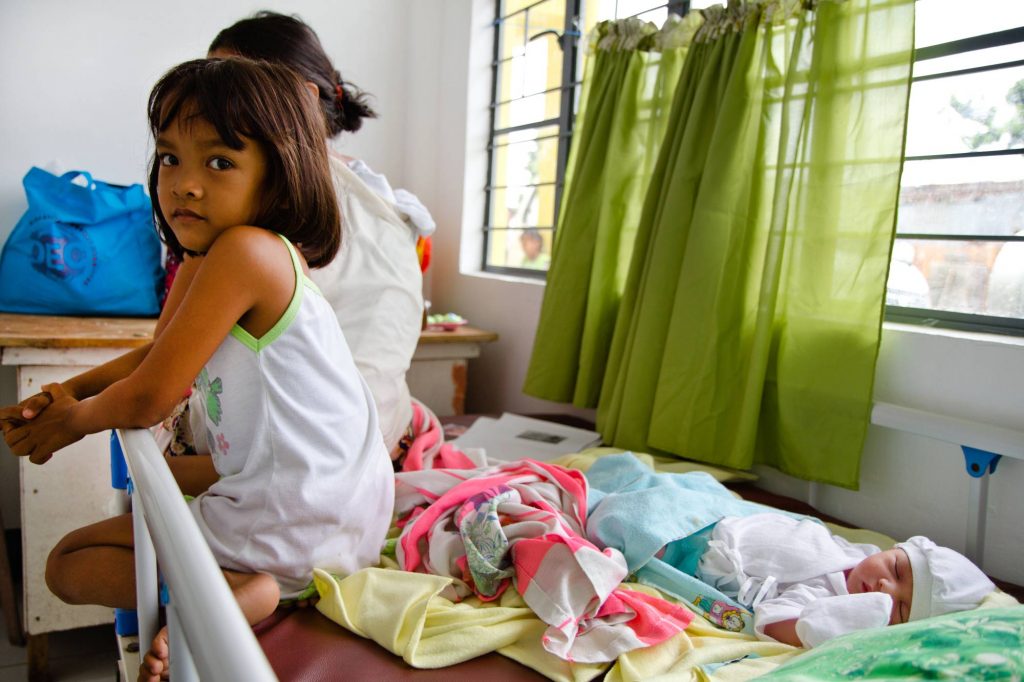
Women’s and Children’s Health
including Services Related to Violence Against Women and Girls
International Medical Corps considers women’s and children’s health a key priority for healthy communities. Because women constitute the foundation of both families and communities, their well-being is essential for the success of those around them. Protecting that well-being is a central challenge of women’s and children’s healthcare in most communities.
International Medical Corps works with communities and local health authorities to improve the health of expectant women by offering safe motherhood services that include antenatal care, safe delivery by skilled birth attendants, quality care for obstetric and newborn emergencies, and post-natal care. Furthermore, International Medical Corps contributes to better health outcomes and reduction of common childhood illnesses and deaths through programs that include vaccinations against communicable diseases, growth monitoring, early-childhood development interventions and community-based case management of common childhood illnesses. (More detail of our early-childhood development work is available here.) Many of our programs are designed to include youth, since young boys and girls in their adolescence have special health-related needs.
In times of crisis—when traditional social codes can easily break down—women, adolescent girls and young children become more susceptible to abuse, rape or sexual exploitation. We offer culturally appropriate services for violence against women and girls.



Areas of Focus
Overview
During emergencies, protracted crises, early recovery or development, International Medical Corps provides and/or supports a wide range of services to reduce maternal and newborn illnesses and deaths, including the following:
- Services implemented during the onset of crisis to prevent excess maternal and newborn morbidity and mortality, reduce HIV transmission and plan for comprehensive maternal health services beginning in the early days and weeks of an emergency.
- Maternal and newborn health, including basic and comprehensive emergency obstetric care; essential newborn care; antenatal, delivery and post-natal care; clean delivery kits; and immunizations.
- Prevention and management of reproductive-tract infections through community-level action such as education programming, as well as clinical case management (commonly the syndromic approach), detection and treatment of cervical cancer, and prevention and treatment of HIV/AIDS, including prevention of mother-to-child transmission of HIV (PMTCT).
Key Stats



Overview
Children depend on their families and their communities for well-being in all aspects of their lives—a reality that makes the health of children in every society a good proxy indicator for a functioning healthcare system that caters to all.
Globally, there has been progress in reducing the number of children who die before their fifth birthday. Despite this progress, the Millennium Development Goal target for reducing child deaths was not met by the 2015 target date, underscoring the need to do more to achieve this goal. The majority of under-5 deaths are due to diseases that are preventable or treatable using proven, affordable and cost-effective methods.
International Medical Corps works at the community level to support the sustainable delivery of proven child-health practices, such as immunizations, growth monitoring, nutrition services, consultations for common diseases and integrated community-based case management of common childhood illnesses.
Key Stats



Overview
Women and girls are more vulnerable to various forms of violence, including, but not limited to, early/forced marriage, female genital cutting, sexual harassment, dowry/bride price abuse, intimate partner/domestic violence, deprivation of inheritance and property, sexual assault and rape.
Violence against women and girls is a pervasive public health problem, affecting the physical and psychological health of survivors, as well as the health and well-being of families and communities. Women and girls are particularly susceptible to violence in emergency settings, when risks can rise at the very time that support systems are interrupted. International Medical Corps works with communities to address these risks, and to combat beliefs and practices that perpetuate violence against women and girls. We also are a leading agency in the delivery of quality, focused support services for survivors of violence. We tailor these services to different cultures and contexts, helping survivors to recover and safely reintegrate into their communities.
Key Stats


